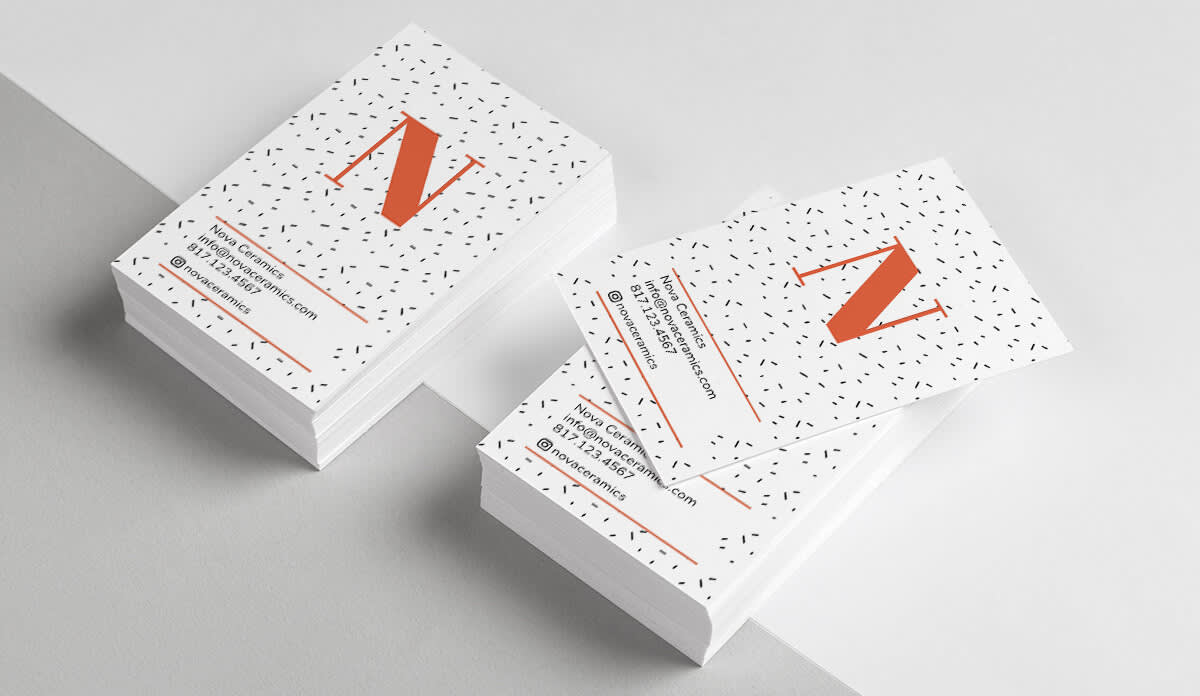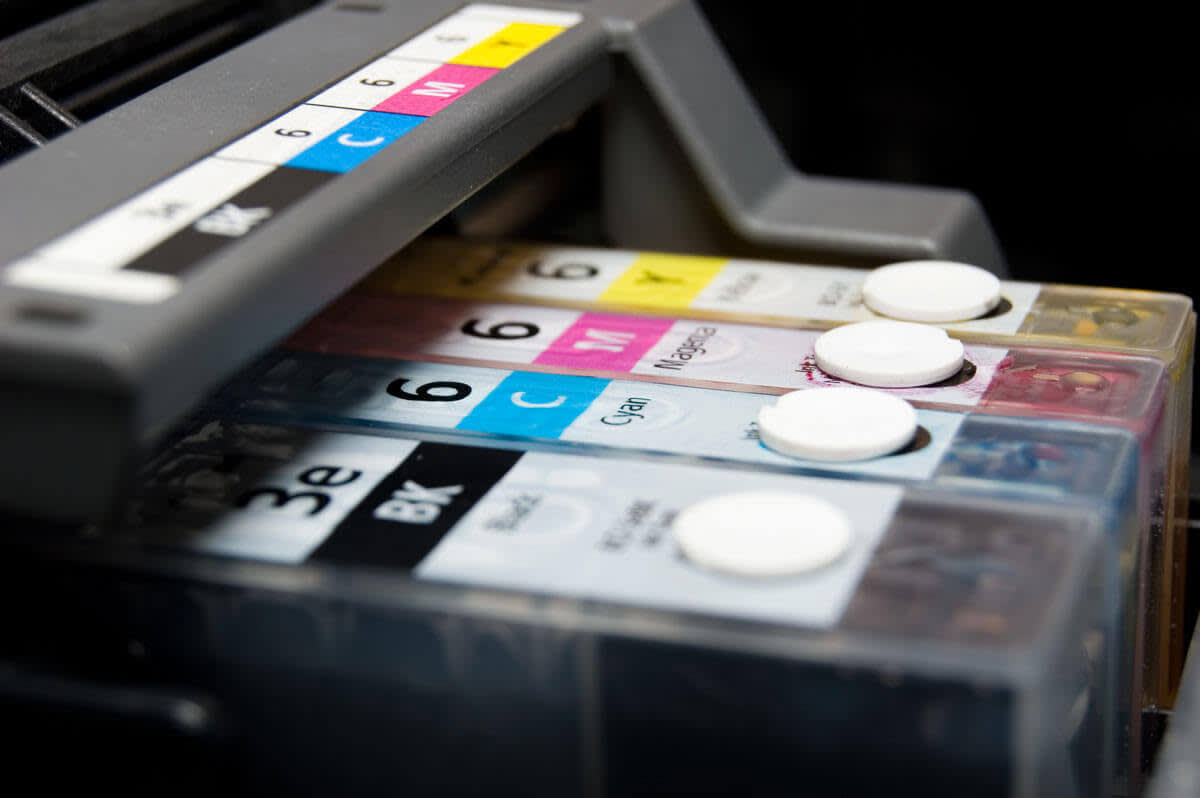Business cards are staples in the professional world. They’re also a few square inches of your personality, and can say a lot about you and your business (beyond your name and contact information). Let’s take a look at how to design memorable, professional business cards, as well as some tips for making them look their best.

How to make professional business cards with PicMonkey
You can easily create polished business cards with PicMonkey’s online tools—no mad design skills required.
Decide how you’re going to print your business cards. The printing option you choose will influence the size of your design, and it’s easier to start with the right size than change it later. (Note: you cannot print directly from PicMonkey)
Go to PicMonkey.com and choose from our folder of professional business card templates, or begin with a blank canvas.
Create your custom business card design with our graphics and fonts, or use your own with our tools. And make sure to add your logo!
Your business card autosaves as you work to PicMonkey's integrated cloud storage.
Export your business card as a PNG file, then send to your chosen printing service or print at home on high-quality cardstock.
Business card printing options and sizing

Debating on whether to print your business cards at home or send your design off to the pros? Here’s a quick look at each printing option:
DIY. By printing your own business cards, you can make as many as you need and get them right away—no need to pay for a package of 500 or express shipping. You can also quickly alter your design and make updated cards if your contact information changes. However, business cards printed at home may not look as professional as cards printed by the pros. It’s also important to run the numbers—DIY printing can often cost more than you’d expect (in terms of effort and supplies) if you need more than a few cards.
Go with a pro. When you order business cards from a professional printing company, they’re going to look professional (obvi). A ton of companies offer business card printing, from office supply stores to specialty companies like Moo and Overnight Prints—check out our list of printing resources to learn about a few. They range in price, so if you wanna go with the pros, investigate online until you find an option that fits with your budget and needs.
The printing option you choose influences the size options available to you. If you’re printing at home, you have a lot of freedom. If you’re sending your design out for printing, the available size options will likely vary by company. And you’ll wanna make sure that your design jibes with the company’s recommended dimensions, so that it doesn’t come out looking funky.
Most professional printers want 300 pixels per inch of resolution (the quantity of pixels in an inch of printed paper). Sometimes, you may need to add padding to the design— printers call this extra space “bleed,” and it means that the background color or photo at the very edge of the design spills over a bit. If you do need to account for bleed, add .25 inches to your dimensions. We’ll use the standard US/Canadian business dimensions of 3.5 x 2 inches as an example and account for bleed. So, 3.5 inches becomes 3.75 and 2 inches becomes 2.25 inches.
Now multiply the dimensions by the resolution: The width is 3.75 inches X 300 pixels per inch = 1125 pixels.The height is 2.25 inches X 300 pixels per inch = 675 pixels.
To make sure your dimensions are spot-on in PicMonkey, start with one of our pre-sized 3.5 x 2 inch business card templates or blank canvas. You can also create a canvas with custom dimensions if you need a different size, or resize your image or design.
Designing your business cards
Choose from dozens of designer-crafted business card templates at PicMonkey's template library
Once you’ve got your dimensions locked down, it’s time to design! Hover over Design on the PicMonkey homepage, and choose your adventure: you can start with a designer-crafted business card template, pre-sized blank canvas, or set up a custom-sized blank canvas.
Find your perfect typeface in the Fonts tab, peruse the selection of graphics in the Graphics tab, and put the color picker to work. You can also easily bring in your own fonts and graphics (like your logo!) and use them with PicMonkey’s tools. Have fun and get creative, but make sure your card keeps with your brand’s look and feel. Here are some helpful resources to get you going:
Design Your Logo — We walk you through the easy-peasy process of making a profesh-looking logo. Use it on your website, business cards, as a watermark on photos, and anywhere you want to represent your biz.
Choosing Fonts for Your Business — Your font choices matter and they help to convey the vibe of your company. We can help you learn how to pair different fonts together.
What information should you put on your business cards?
When designing your business card, it’s essential to put the important information first. What you end up putting on your card depends on your business and needs, but these things are commonly included:
Your name. List your name in the way you want people to identify you. More informal, shortened versions of names or nicknames are usually okay if your profession doesn’t involve a courtroom or hospital.
Your job title. This lets people know what you do at the company.
The company name. Be sure to include the name and, usually, logo of the company you work for.
A phone number. Many industries are seeing a shift away from phone calls, but including a phone number on your business cards is still considered a fairly standard practice. Also, consider whether or not you want your personal line or cellphone number included on your business card.
An email address. Include a professional email address that you check frequently.
A website. Business leads may want to research your company. Help them out by including your website on your business cards.
Physical address. If you work outside of your home, consider listing your business address on your cards. That way, the people you meet will know where to go if they want to meet with you or send something over.
Saving tips

Once your oh-so professional business card design is complete, export it to your computer as a high-quality PNG which is the best file option for printing.
Not ready to download yet? No prob—yyour business car design is autosaved in your PicMonkey cloud storage as multi-layer files that can be re-edited later, so you can quickly update your info if it changes, fix a typo, or make changes if you decide you’re not in love with your design later on.
